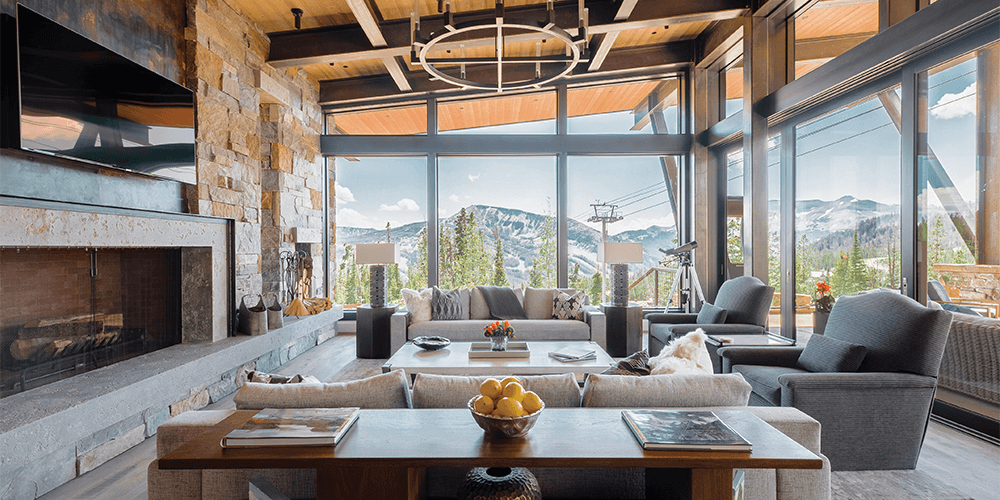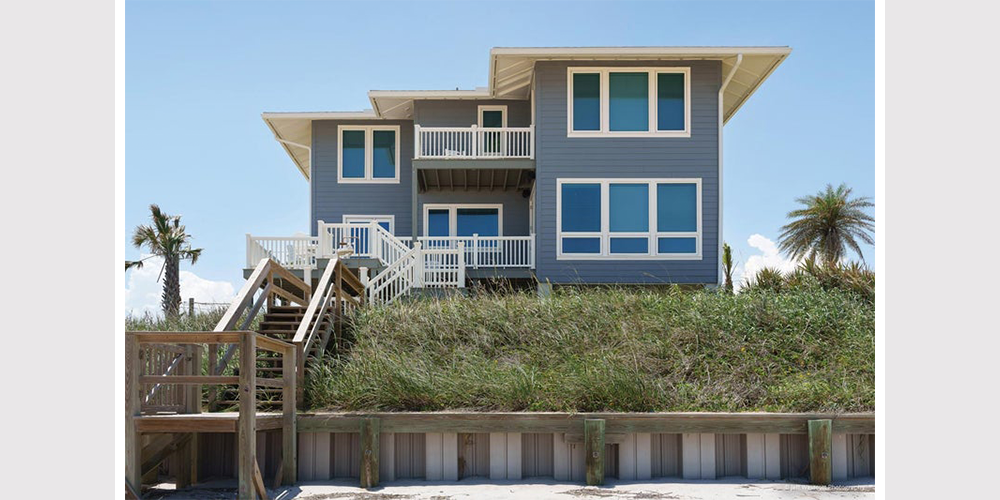Homes and other built environments are intricate systems. Each component of that system—including windows—can be adjusted to control comfort and efficiency. Windows offer an opportunity to reflect an energy-conscious mindset in your design.
Windows mitigate energy transfer at two key fronts: from the powerful elements outside and from the climate controls within. More specifically, the features of a window regulate how variable sunlight affects the interior and how desirable heat escapes to the exterior. A high-performance window will prevent ultraviolet (UV) light from the sun from overheating a space and also maintain a specific temperature within that same space.
Perhaps the most well-known indicator of a product’s energy efficiency is the ENERGY STAR label. This easy-to-spot logo is issued by the United States Environmental Protection Agency (EPA). Manufacturers who meet the standards set by the EPA may voluntarily elect to include the ENERGY STAR label on their certified products; however, this label alone does not provide specific measures to compare to other recognized goods. That is where the National Fenestration Rating Council (NFRC) comes in.

The NFRC is an independent, non-profit group committed to demystifying important details of performance when it comes to windows and similar products. They produce a specialized label—called an Energy Performance Label--that provides key ratings for reference by architects, builders, and homeowners as they determine which energy-efficient products may be the best fit for their projects.
The NFRC features the following measurements on their Energy Performance Label for windows:
- Solar Heat Gain Coefficient (SHGC): The SHGC indicates a window’s ability to block heat from the sun’s rays. This measure is marked 0 to 1, and the lower the number, the better the resistance.
- U-factor: A sort of complement to the SHGC, the U-factor signifies a window’s ability to contain heat inside a space. This measure is marked 0.20 to 1.20, and the lower the number, the better that containment.
- Visible Transmittance: With windows addressing several needs within a home, NFRC doesn’t want to lose sight of what is perhaps its most essential use: welcoming in light. A window’s capacity to illuminate a space naturally and successfully is noted with the Visible Transmittance measure. Unlike SHGC and U-factor, a higher rating here is desirable, with the lowest being 0 and the highest being 1.
- Air Leakage: Another element affecting window performance is air movement itself. Drafts are uncomfortable and a detriment to energy efficiency. NFRC’s Air Leakage rating scores a product’s ability to regulate airflow. Rather than a range, this measure is simply noted as ≤0.3 if it is within NFRC standards.
- Condensation Resistance: Though this fifth measure is optional for manufacturers to include, a higher Condensation Resistance will tell you a product is more capable of preventing moisture from accumulating.

The Passive House Institute US (PHIUS) is another unique non-profit that provides certifications for energy efficiency-related products. Specifically, they address those suited for use in passive energy-oriented projects within the design and construction industries. The database developed by PHIUS is highly detailed, offering important measurements for individual components—not just the overall product. They also offer recommendations for the climate zones in which certain products should be used.
Windows often score well for these certifications when they prioritize the following aspects of their construction:
- Multiple glass panes: Several layers of glass—often broken by air or specialized gases—will limit the energy transfer across the window unit. Two panes are common, and three panes may be used for additional insulation.
- Low-emissivity coating: Often shortened to “low-E,” a low-emissivity coating helps control the amount of radiant energy from the sun that passes through the window. “Windows manufactured with low-E coatings typically cost about 10 to 15 percent more than regular windows, but they reduce energy loss by as much as 30 to 50 percent,” reports Energy.gov.
- Argon or krypton gas fills: As previously referenced, certain nontoxic gases are inserted into the space between windowpanes to enhance the unit’s ability to regulate heat transfer. Argon and krypton are odorless and colorless gases that are denser than air, slowing thermal energy as it attempts to pass through the window.
- Appropriate Framing: Aluminum, wood, composites, and other materials all allow heat to pass through them differently. Open chambers and other thermal breaks within these components can further limit the energy transfer.
- Sufficient Weatherstripping: Weatherstripping and its maintenance will directly impact a window’s ability to insulate. There are weatherstripping options that suit different types of climates and levels of use.
A high-performing window considers each of the above characteristics. With these and the corresponding ratings and certifications in mind, you can begin to plan your efficient design.

When certified windows are part of your design, important and exciting benefits arise:
- Indoor Comfort: A home or other space is most welcoming when you don’t have to give a second thought to addressing any unpleasant temperatures, lighting, or sounds. A high-performance window helps regulate heat, direct light, and muffle noise. This degree of control can make your special space more comfortable for years to come.
- Meeting Standards: Depending on where you are building your project, local regulations may require windows that perform at a certain level. This may mean selecting insulated windows for impact resistance or using specially-coated windows to manage light pollution. Certified products make this demanding buying process much simpler.
- Cost Savings: Higher-performing windows usually have greater initial costs, but the reduction in energy expenses can be dramatic over time, especially if outdated, underperforming windows are replaced in the process.
- Aesthetically-pleasing: High-performing windows come in a variety of shapes, sizes, and styles. Kolbe Windows & Doors’ numerous customization options ensure it won’t be necessary to sacrifice style and vision to achieve an effective window system!
Selecting windows that account for so many complex technical factors can be a challenging task, especially when you have a clear aesthetic vision in mind. Thankfully, with resources from ENERGY STAR, NFRC, and PHIUS and expert construction from individual manufacturers like Kolbe Windows & Doors, the benefits of energy-efficient windows have never been more attainable.